Sharing is caring!
In “Introduction to Poetry” Billy Collins writes about students studying poetry: “But all they want to do / is tie the poem to a chair with rope / and torture a confession out of it. / They begin beating it with a hose / to find out what it really means.” All to say that poetry can be challenging – for teachers and students!
What is this poem about?
Why a red wheelbarrow (shout out to William Carlos Williams!) and not a yellow one?
Why does the tyger burn bright in the forest of the night?
And on and on…
Figuring out the meaning of a poem is hard work BUT it’s important work! And there are ways to make it easier for you as a teacher and for students too! Enter poetry creation…
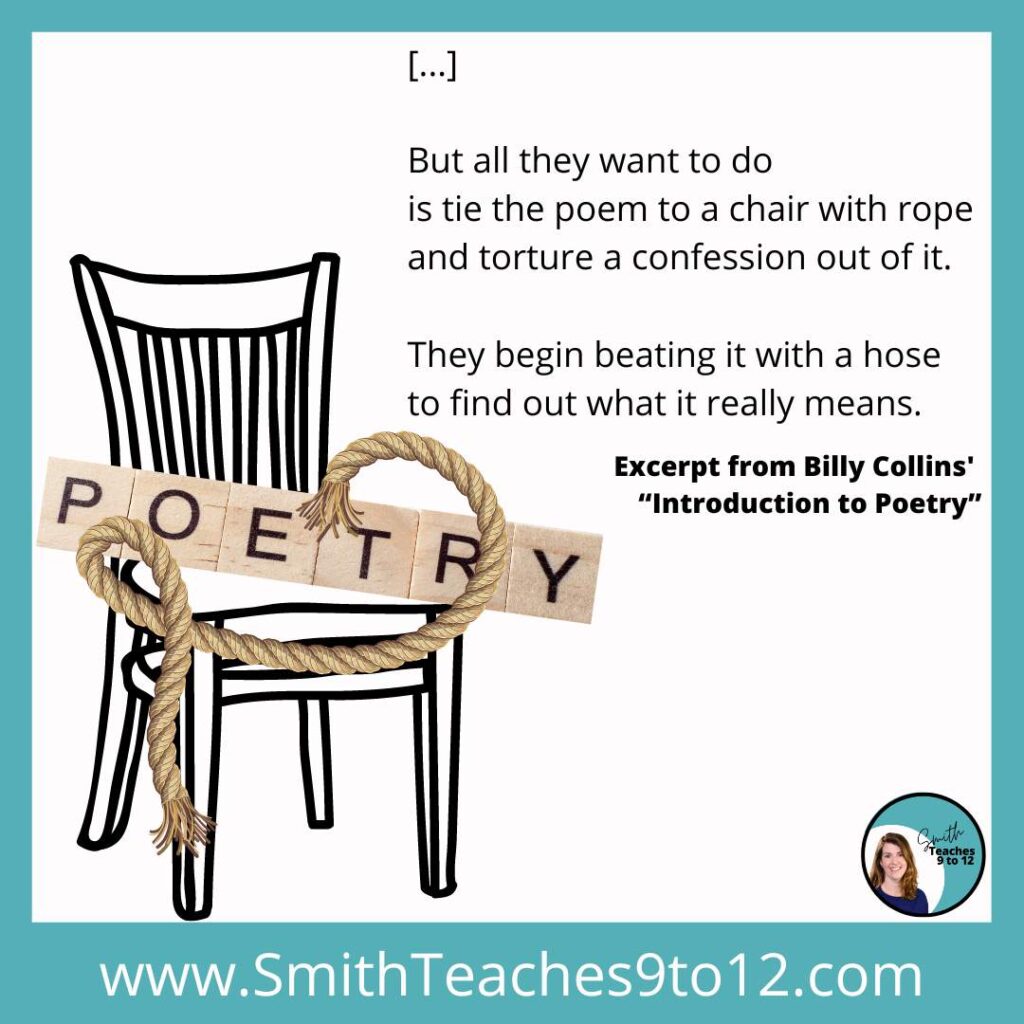
This is the first step before ever asking “what does this mean?” (I actually never ask “what does this mean?” when it comes to poetry.) With poetry creation, students explore and play with language and form and, in the process, gain confidence and develop some academic risk taking.
Scales of risk in creating poetry
Creating poetry helps students be better critical and creative thinkers when it comes to analysis. Some poetry creation is lower risk than others. Scaffolding students’ creative skills from low risk to high risk sets them up for success with future analysis.
Here’s a scale I use to establish different levels of risk for poetry creation activities.
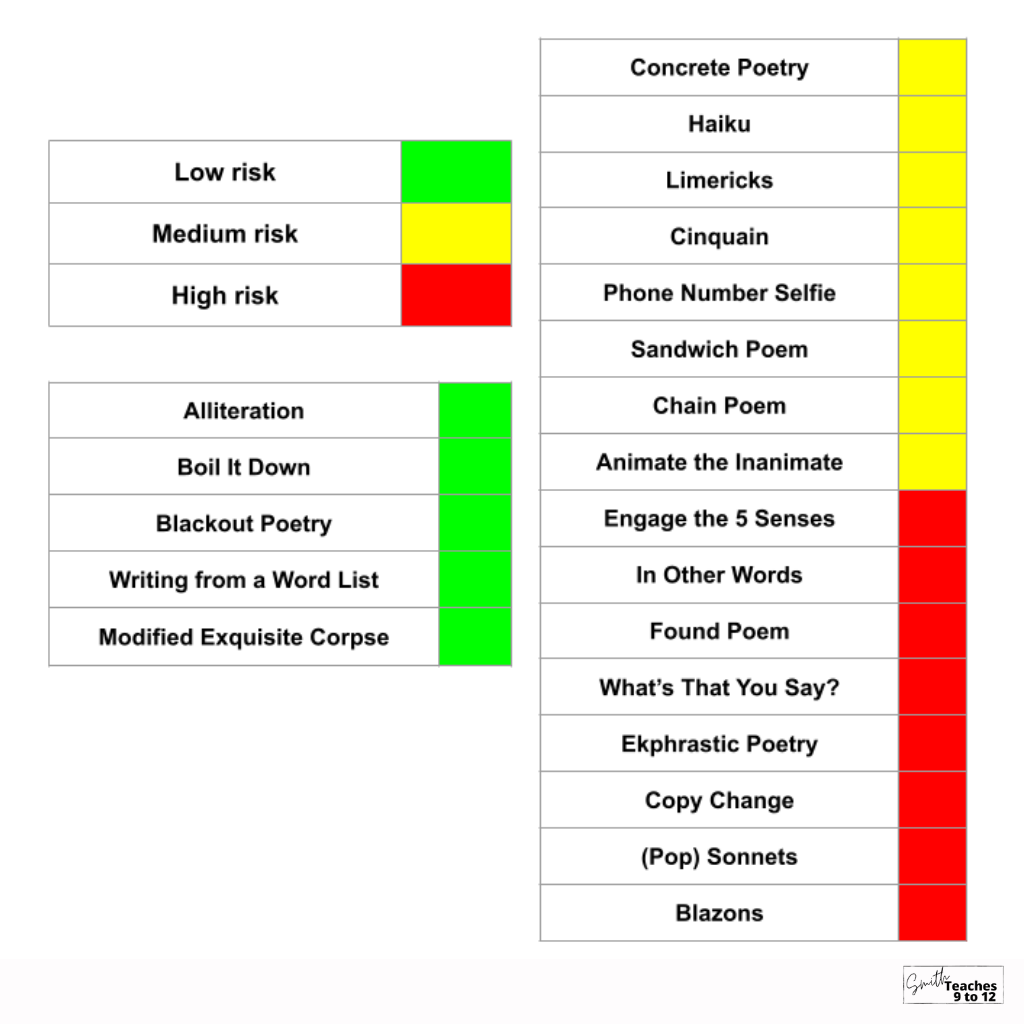
Adding poetry creation into your ELA classroom
1. First figure out how you want to include poetry – is it a standalone lesson or something to complement a novel study or other established unit? Check out these 6 ways to include poetry in your next novel study.
2. Decide what level of risk you want students to take in class.
If you’re teaching grade 9 and it’s early in the year 3 low-risk and 1 medium-risk activity is probably ideal. If you’ve done poetry creation already then increase the risk. This is where mixing in different levels of risk is ideal (1-2 low risk, 1-2 medium risk, and 1 high risk activity).
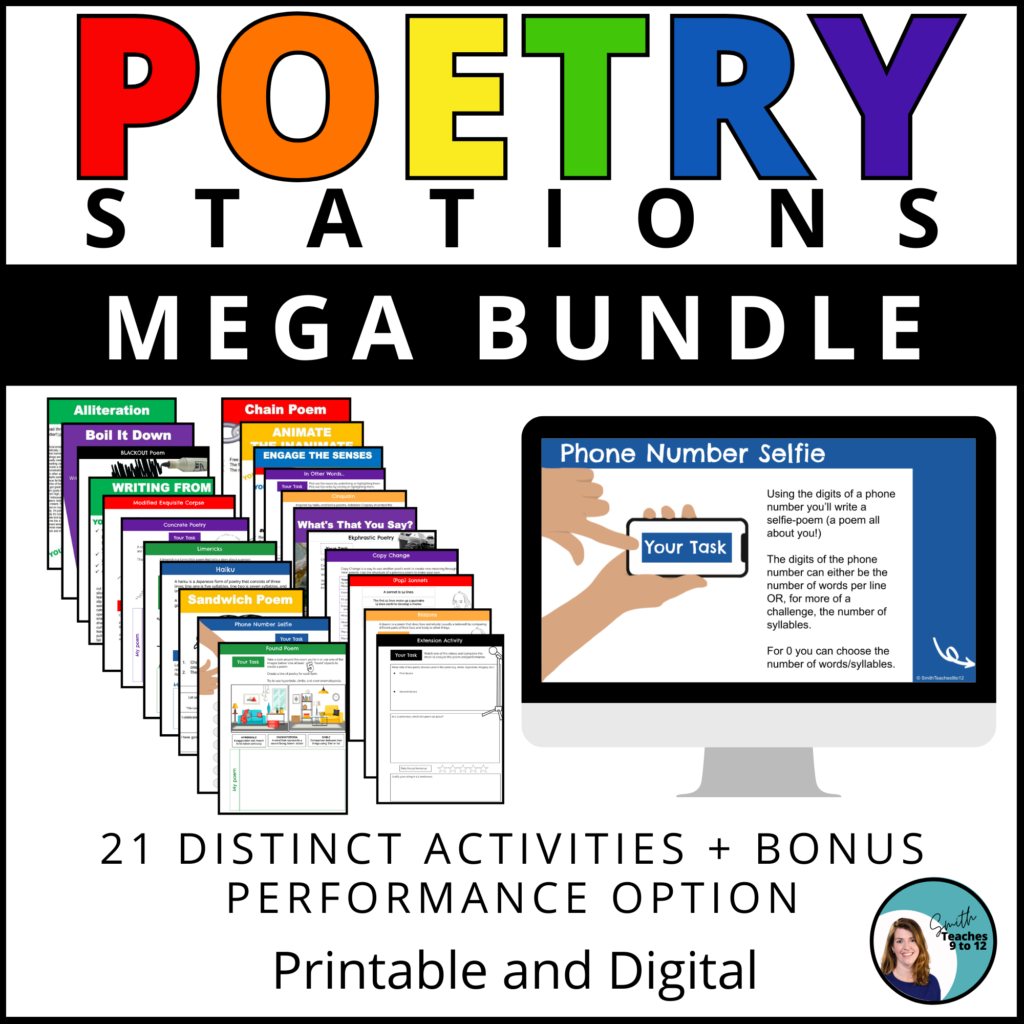
Here’s a mega bundle of poetry stations in print and digital format to meet all your needs in class. It includes ALL of the activities on the scale of risk included above.
This bundle is sure to serve you and your students for years to come!
2. Choose 3-5 poetry creation activities to mix and mingle in class. This provides safety and challenges to students and also to differentiate for the students. Plus, the variety of activities means this could take 30-60 minutes.
3. Use stations. Students can rotate stations around the room or online. Or provide the different activities to specific student groups. They’ll move through the stations without physically moving around the room.
The benefit of keeping students in one place with their own group of activities is that you can differentiate based on groups. Maybe a group needs low with a medium risk or two. Another group may need a medium risk to warm up before tackling 2-3 high risk activities.

Moving from Creation to Analysis
With creating poetry students are then a little more familiar with the process, more comfortable with language, and more apt to explore and to analyze a poem. They can recognize the process of creation that goes into poetry and use that built-up confidence and understanding to move towards analyzing poems of all kinds!
Consider how you might select poems for analysis based on the type of creation activities.
If students are writing haikus, then maybe they shift to analyzing haikus from historical poets.
If they wrote pop sonnets, a challenging activity, then they could probably learn more about blazons – a form of sonnet? You can complete that in class with this ready-made lesson.
Takeaway
Like me, you probably want students to do less tying of a poem to a chair and torturing it and more to “… hold it up to the light / like a color slide / or press an ear against its hive. / […] / or walk inside the poem’s room / and feel the walls for a light switch” (Billy Collins’ “Introduction to Poetry”). These poetry creation activities are the first step in that process!
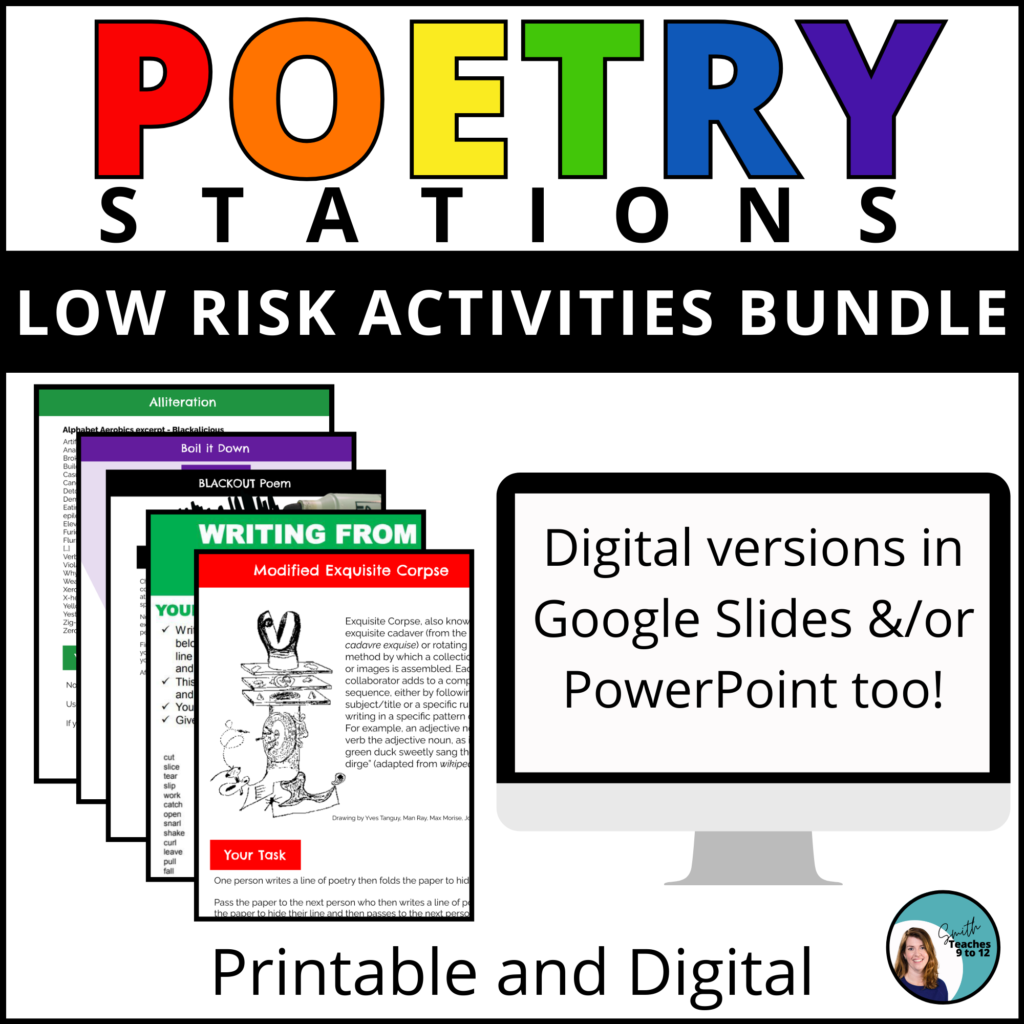
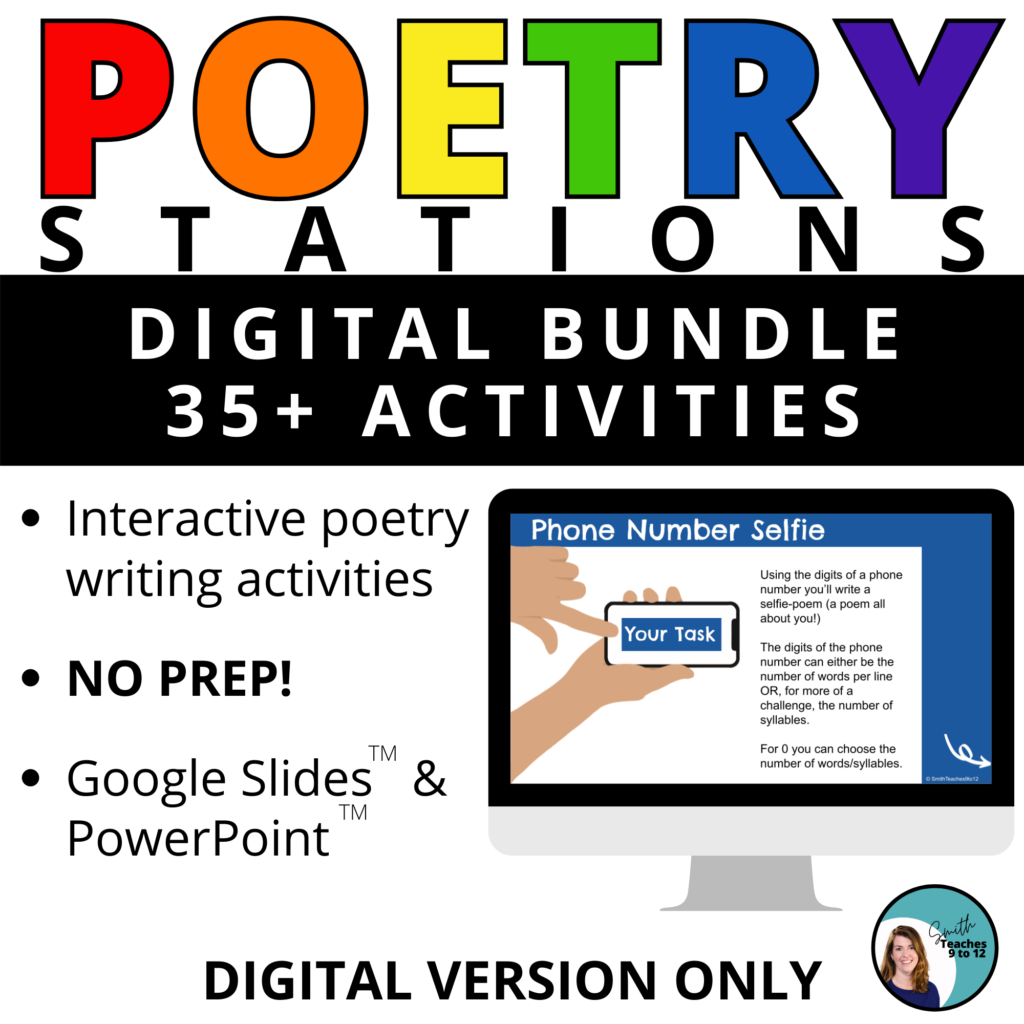
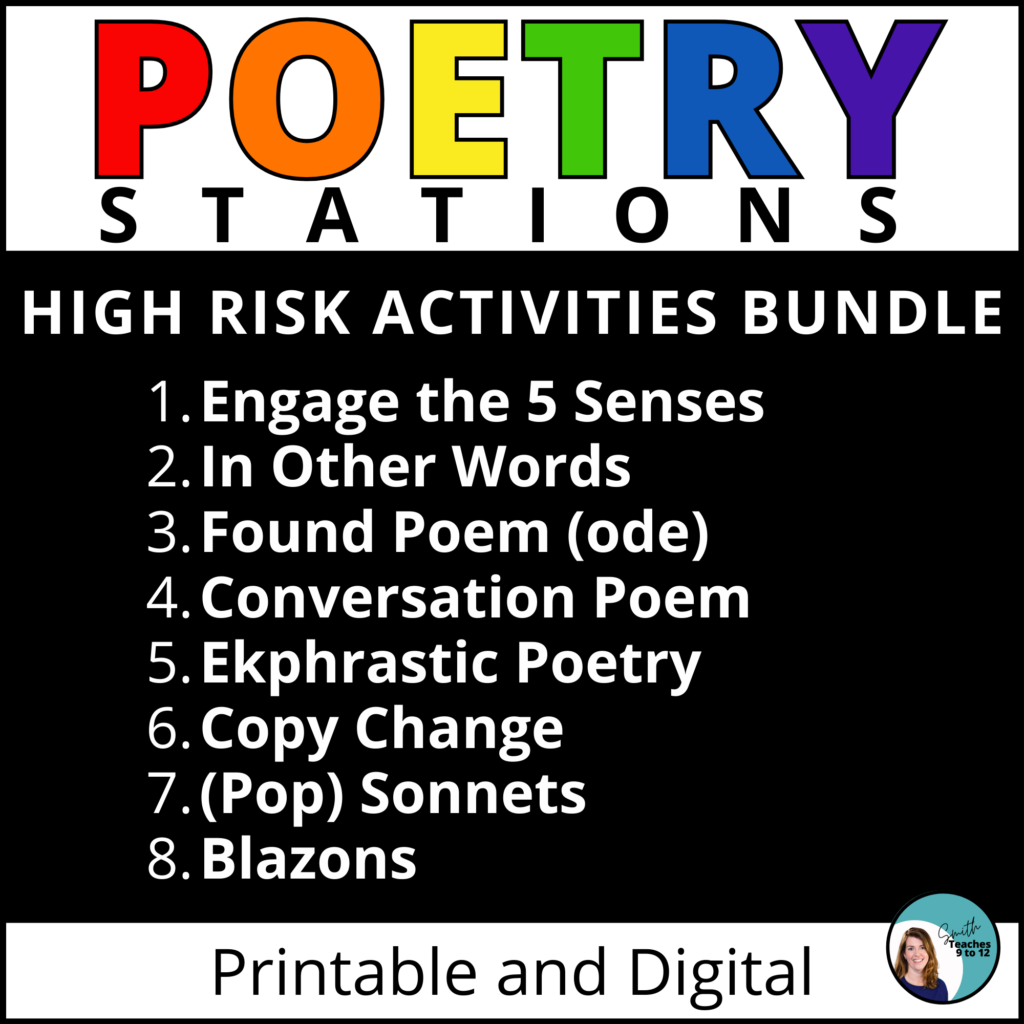
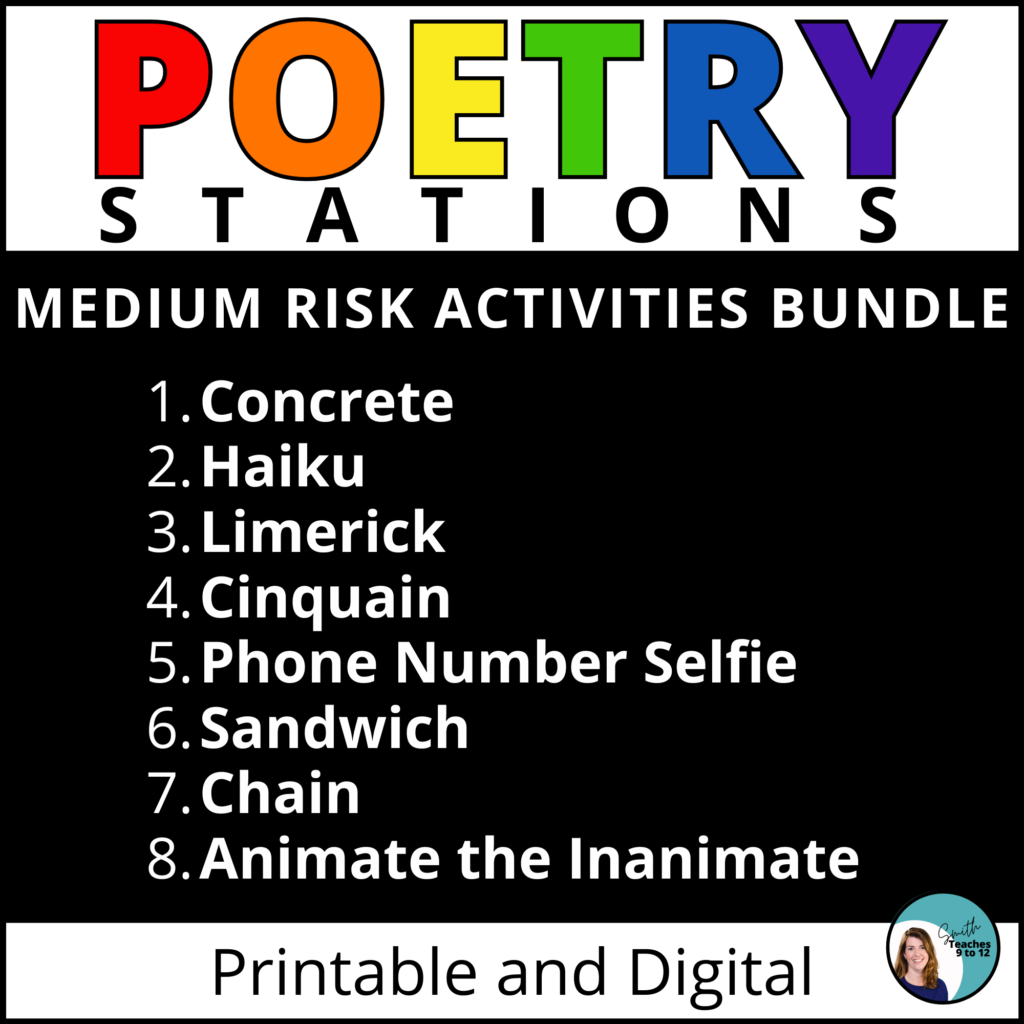
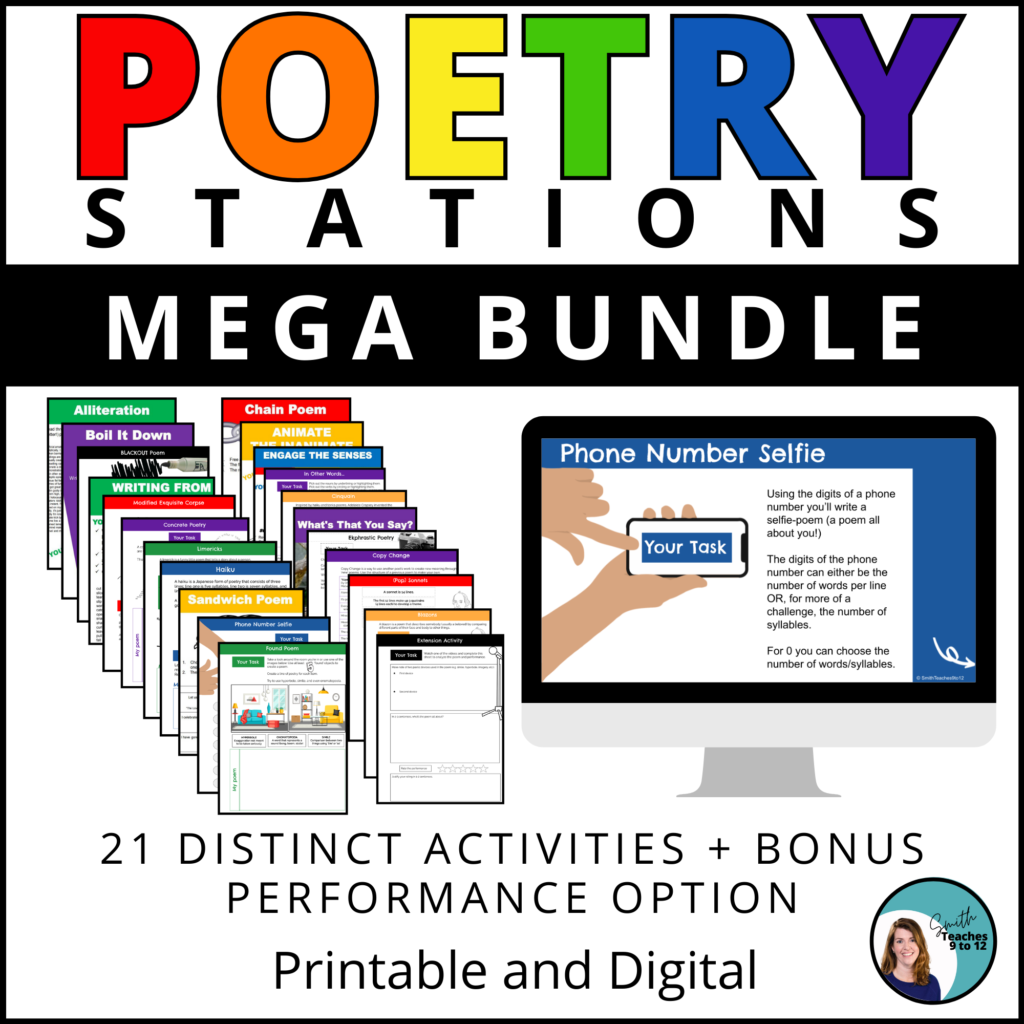
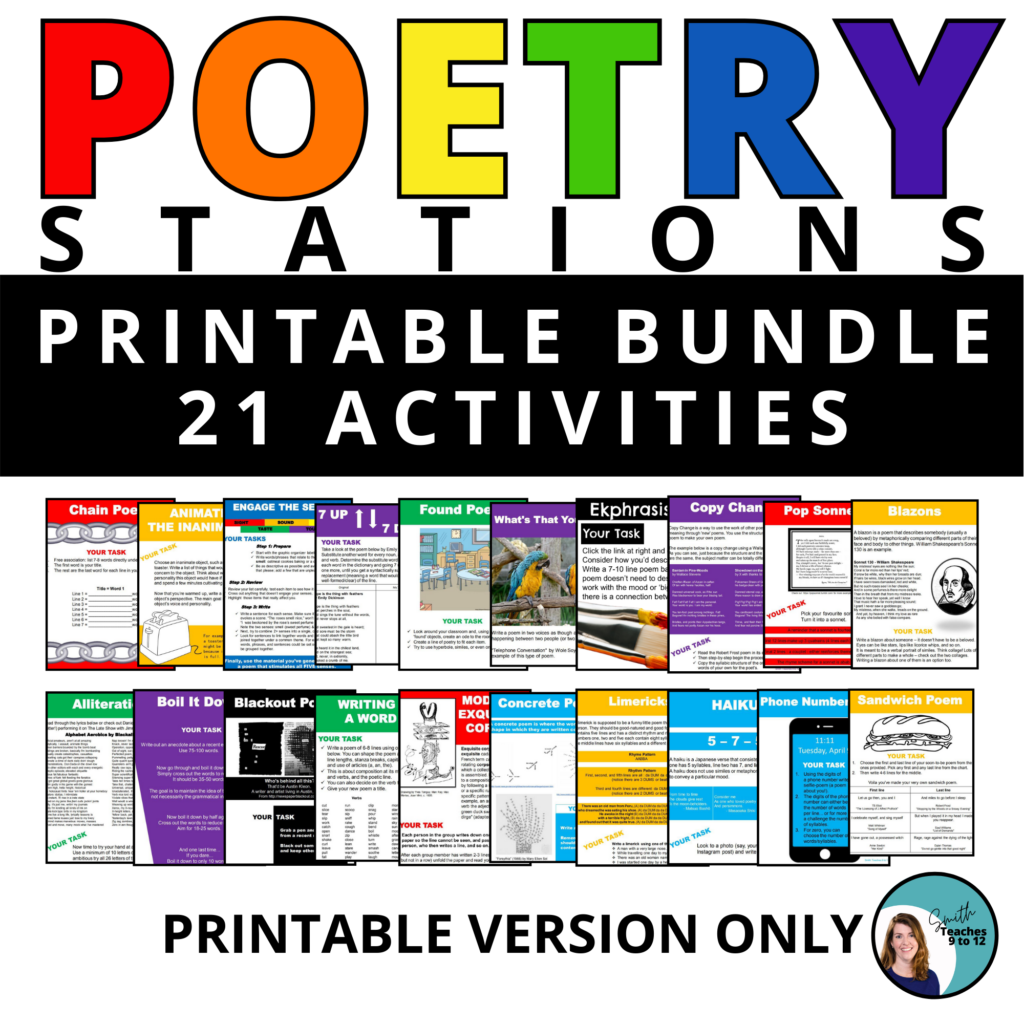
If you’d like to do individual poetry creation activities or bundles for stations in your classroom, check out any or all of the options I have in my TpT store.


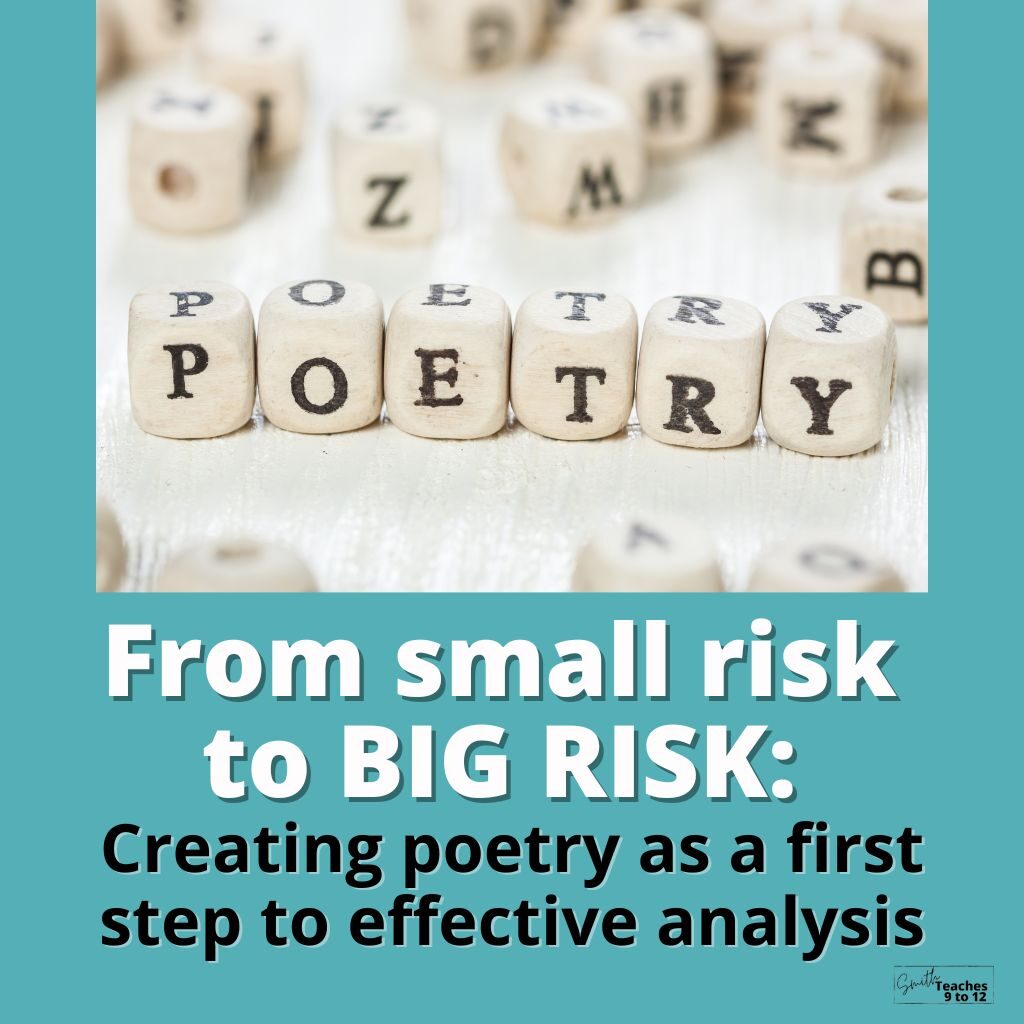
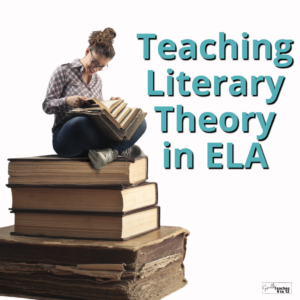
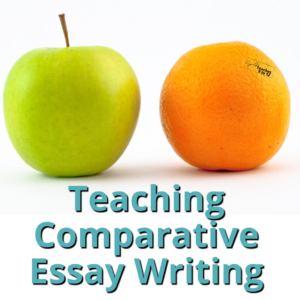

2 Responses